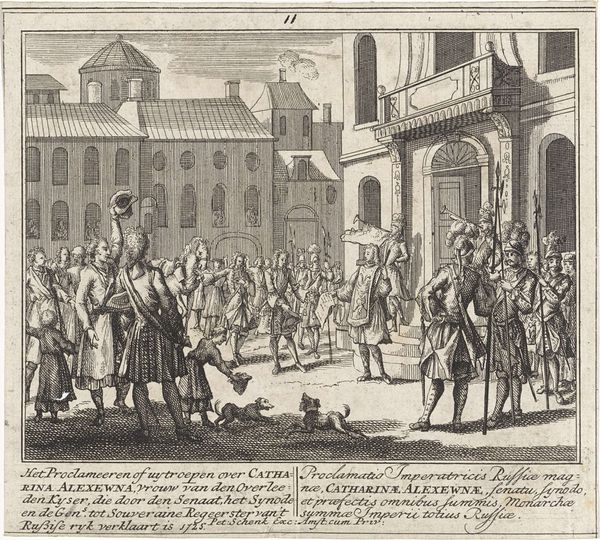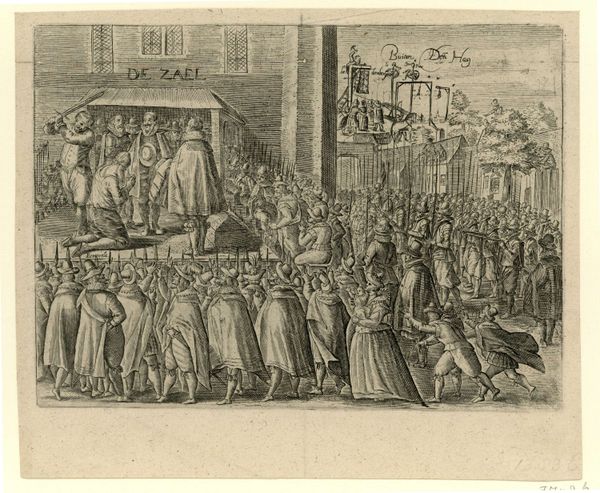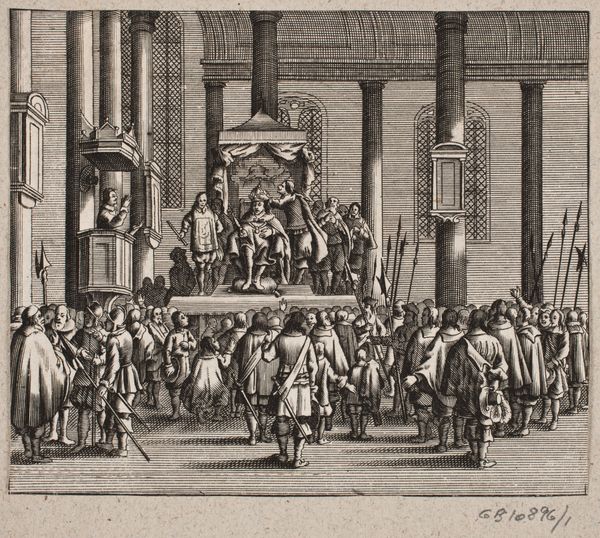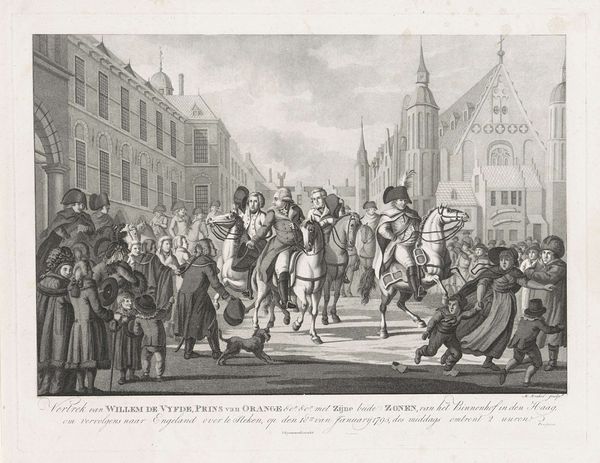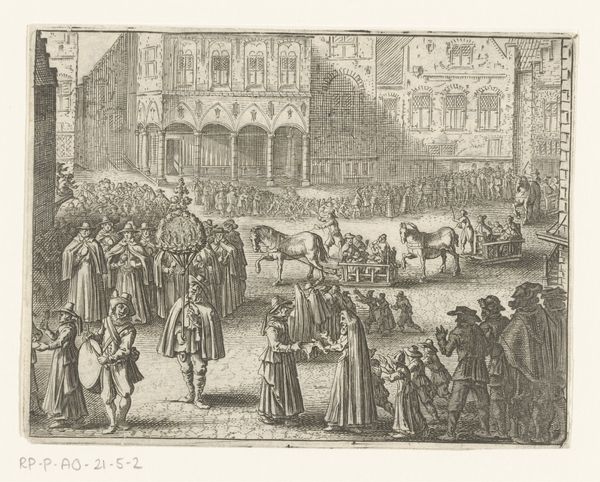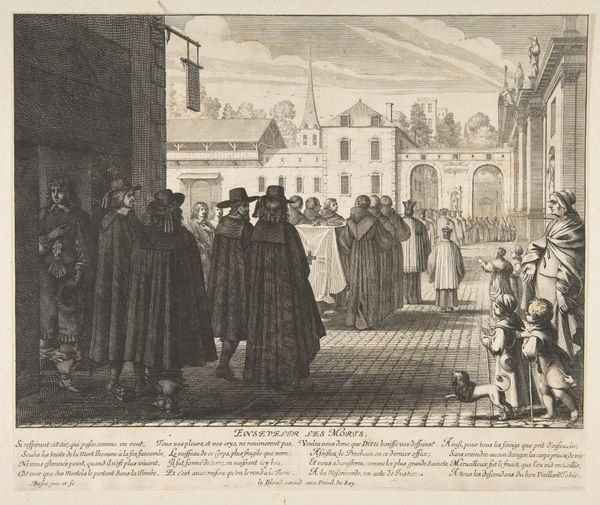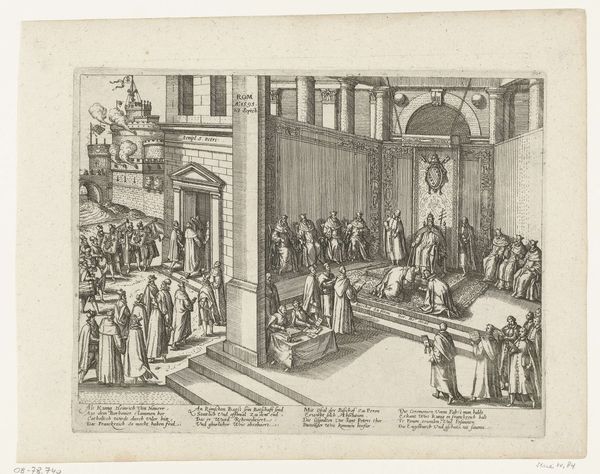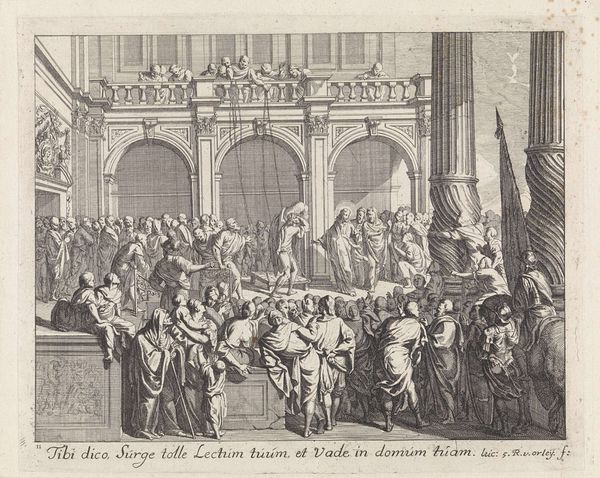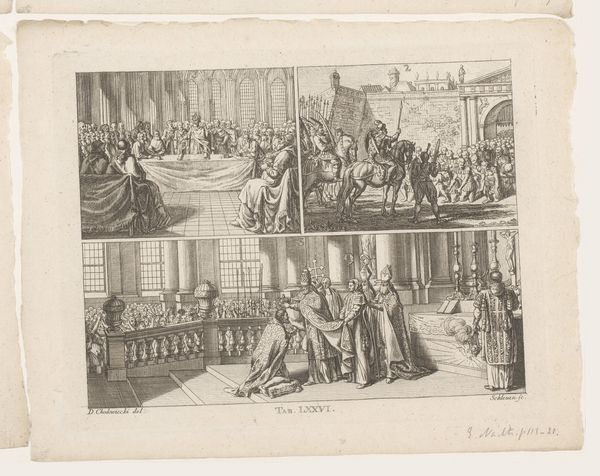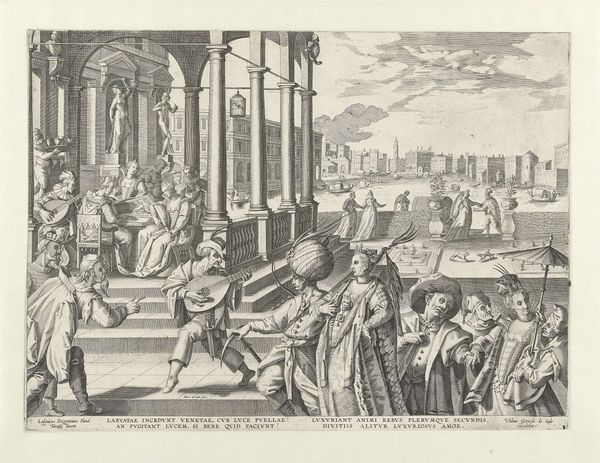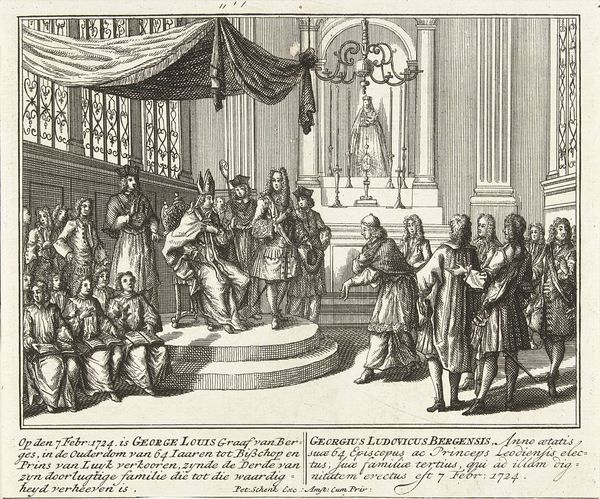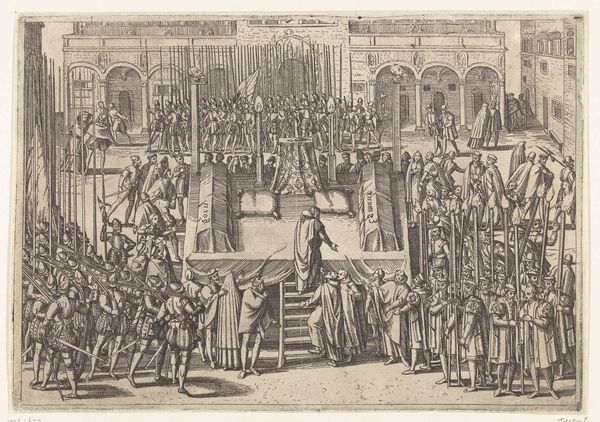
engraving
#
baroque
#
old engraving style
#
cityscape
#
history-painting
#
engraving
Dimensions: height 120 mm, width 345 mm
Copyright: Rijks Museum: Open Domain
Editor: So this is Richard Collin's "Procession in Antwerp," made around 1678-1680. It's an engraving, currently held at the Rijksmuseum. It gives the impression of an official event in progress, captured with all of its social structure visible. What symbols or imagery stand out to you in this work? Curator: Immediately, the procession itself captures the eye. Consider how these public displays served as powerful symbolic performances in Baroque society. They weren't merely religious exercises, but visual affirmations of social order, divine right, and community identity. What feelings are evoked by this display? Editor: There's a solemn atmosphere but with the pageantry, also grandeur and perhaps pride. I also feel excluded. Curator: Precisely. Each banner, each costume, each gesture speaks volumes. Take those ornate lanterns, for instance. They’re not just providing light; they're symbols of enlightenment, guiding the faithful but also highlighting the authority leading the way. Consider also the building to the right -- its presence signifies the stability of this religious tradition. Notice how the artist meticulously renders the folds of fabric. What do they say? Editor: Well, they show a high level of craft. Maybe Collin used that technique to indicate not just status and class but to monumentalize this moment in Antwerp. Curator: Exactly. Now consider the gazes and gestures. Note the careful rendering of faces, each individual reacting differently to the spectacle. We see reverence, curiosity, acceptance, and, perhaps, even skepticism in their expressions. These are carriers of societal norms and values being acted out. In the procession itself, the use of symbols of state is visible. What purpose do they play? Editor: I think they affirm a kind of cultural memory, right? Curator: Yes. It’s fascinating how Collin captured both the grand spectacle and the subtle psychological nuances of those participating and observing. Do you feel it's a straightforward historical record, or something more? Editor: More, definitely. Now that you mention the psychology behind the people represented in this historical event, the symbols truly evoke not just culture, but something deeper: something distinctly human. Curator: Indeed. It makes you wonder what aspects of our culture today will be analyzed centuries from now based on visual records like these.
Comments
No comments
Be the first to comment and join the conversation on the ultimate creative platform.
